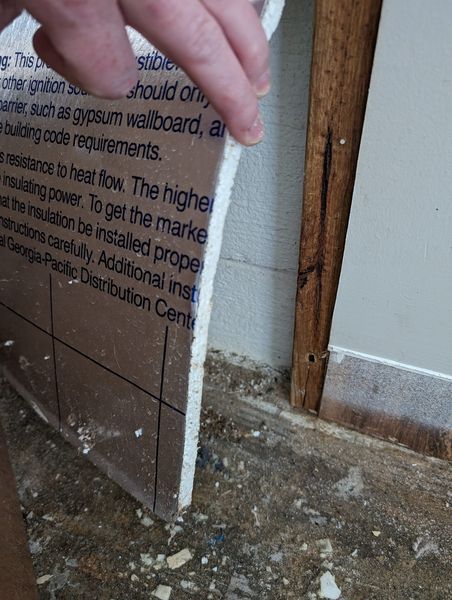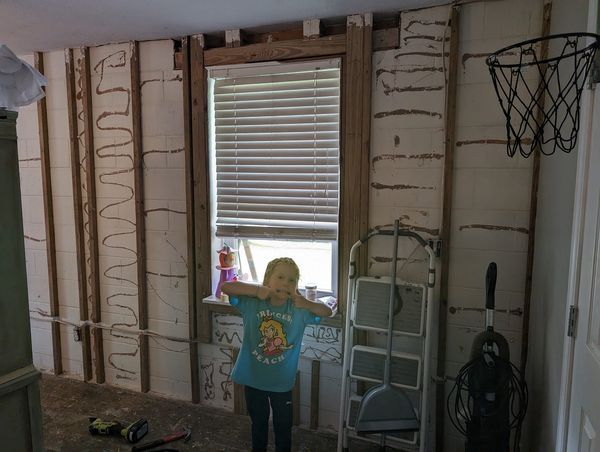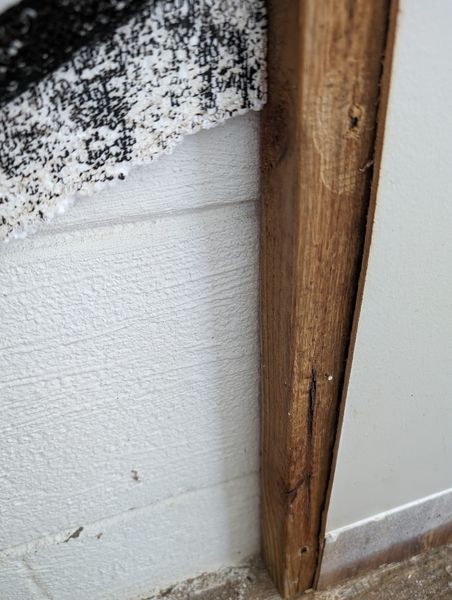Should we remove the existing frame before installing new insulation in my daughter’s room turned living space, and how do we remove old glue from the wall?
8 months ago
Last Updated: October 14, 2024
We’re currently in the process of renovating my daughter’s room, which used to be a garage. We discovered a moisture problem, so we’re getting rid of everything. Our plan is to swap out the old styrofoam insulation for 1 1/2 inch pink foam insulation and then cover it with Sheetrock. I’m wondering if we should remove the existing frame on the cinder block wall before adding the new insulation, or if we can just cut the insulation to fit around it. And any tips on how to remove old glue from the wall would be greatly appreciated!



What’s the reason for wanting to get rid of the glue?
I’m not sure… Do I need to get rid of the glue before attaching the pink foam board insulation? Also, for my laundry room, I was considering leaving the bricks exposed, but there’s glue all over those walls as well.
Even though it doesn’t seem to be pressure-treated lumber, it looks to be in good condition. The only reason to remove anything is if it’s damaged. It doesn’t make sense to insulate and then reframe because it would be hard to securely attach the fur strips without causing the foam behind to collapse, rendering it useless. Just fit it snugly against the fur strips and you’re good to go.
Using fiberglass insulation won’t be effective in that space due to its shallow depth. It appears those are not 2×4 studs. If you’re tearing it down, reframe with 2×4’s for proper insulation for the walls.
I was actually planning on using 1 and 1/2-inch pink foam board insulation instead. Do you think it would be okay if I just cut the foam board to fit into the existing framed spaces?
Paul uerrero decided not to take down the wall. Instead, he placed the pink foam against it, framed a new wall, and continued with the renovation.
The trading community at Humbled is full of experienced traders who are always ready to share their knowledge, strategies, and insights. Whether you’re a novice or a seasoned trader, this community has something for everyone.
I’d suggest checking out a product called Insofast, which is 2 1/2” thick and can be directly glued to the block wall with plastic studs included. It’s similar to ICF walls.
Moisture problems are happening because the studs are too close to the block! You need to create some space between the wall and the block. No matter what you try, if you don’t fix that, the issues will persist.
You don’t need to remove the adhesive unless it’s causing problems. Scrape it off if necessary. The wood on the wall is okay, no need for PT unless there’s dirt on the other side. Install the pink foam. If it’s not a perfect fit, use canned foam to fill gaps. Cover the wall with 3mil plastic. Hang drywall but leave about 1/2″ gap from the floor.
Thanks a bunch, !
Reat advice from ! 👍
The moisture issue is likely originating from the floor, depending on the age of the house and the contractor. The problem is typically the lack of visqueen under the concrete.
It looks like you’re dealing with multiple issues. Check the local building codes for guidance without raising any red flags. Or simply get a building permit and ask the local inspector plenty of questions.
How low does the temperature drop in that room during winter?
All kinds of issues with moisture in concrete blocks and slabs often times, changing insulation won’t fix moisture problems.
So many questions!
Where do you live exactly? Always start with that – insulation depends on the specific climatic zone you’re in. All guesses right now are just wild.
What do you need insulation for? Heating, cooling, or both? Does the building have moisture control? Is it air or statically controlled? With what?
In Canada, converting a garage into an occupancy is nearly impossible without a lot of alterations, and only if you can change the zoning on the property!
Typically, 1 1/2″ of insulation is practically useless for controlling the interior climate.